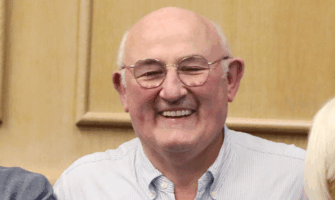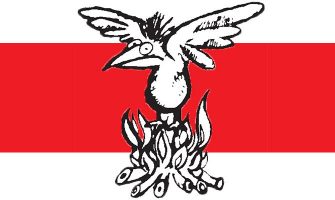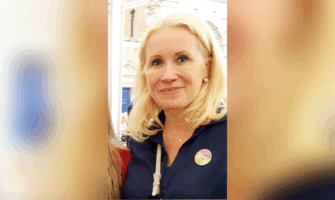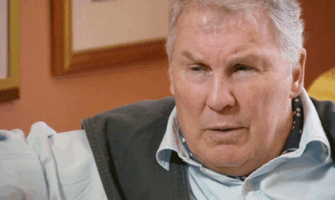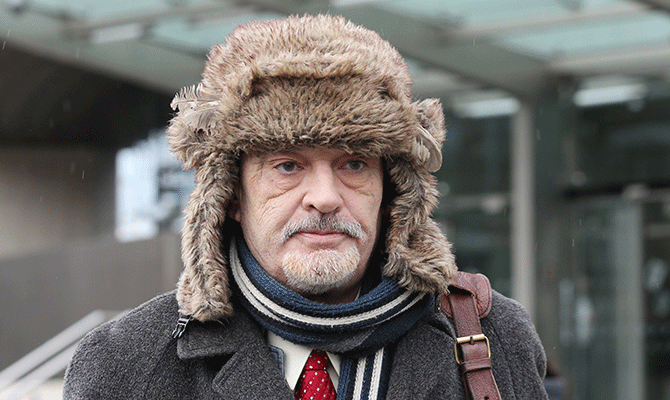
Ian Bailey
THE DEATH of Ian Bailey, ‘chief suspect’ for the murder of Sophie Toscan du Plantier in 1996, drew the sort of crowd that sometimes gathers outside police stations to bang on the vans bearing murder suspects to court. Except that this particular crowd was composed of journalists desperate to validate themselves and their outpourings on Bailey over nearly three decades. Never was that perennial Faustian pact between journalists and Garda media manipulators manifest so blatantly and so effectively. And it was all in the quest to convict a suspect against whom there was, as a matter of legal fact, no evidence of having committed the crime. Now there is a call from An Garda Síochána, relayed to the public enthusiastically via the media, for the Director of Public Prosecutions (DPP) to state that the Garda review of the case means Bailey would have been prosecuted if he was still alive.
The ostensible rationale for this is to give closure to the victim’s family and allay community concerns in west Cork. The real reason is that the Garda needs to persuade the public that the murder investigation was not as bungled, inappropriate or even tainted by illegality as many people believe. As well, many in the media need to justify why they regurgitated Garda spin and ignored the DPP’s forensic legal document – packed with evidential detail and inconvenient facts – that eviscerated the Garda case against Bailey.
That process was ramped up in the aftermath of Bailey’s death, with coverage of the controversy containing no details of the DPP’s deliberations. To include such information would have resulted in much confusion and embarrassment so, instead, many journalists simply repeated the Garda arguments without stating that they had been dissected by the DPP.
This only partially explains the media’s refusal to properly investigate the French woman’s murder and Garda efforts to shoehorn Bailey into the frame. More specifically, the DPP explained in its document that gardaí had issued lurid warnings to both the DPP and the local community that Ian Bailey would kill again unless arrested; that he would attack witnesses living close to him; and that these dangers could only be averted by charging Bailey with murder.
The DPP went on to say: “There has been a consistent flow of information to the media in relation to the investigation into the killing… Once Ian Bailey was believed by the public particularly in the local area to be responsible for the murder the fear thereby engendered was bound to create a climate in which witnesses became suggestible.”
This statement should be set alongside that of Marie Farrell, at first a star prosecution witness, who retracted her initial statement incriminating Bailey on more than one count. Farrell told a special inquiry by Assistant Commissioner Ray McAndrew, set up in 2005, that she had been inveigled by gardaí to make statements about alleged threats to her from Bailey. As The Phoenix reported (see edition 4/5/12), Farrell later “retracted all and every incriminating statement she made to investigating gardaí”.
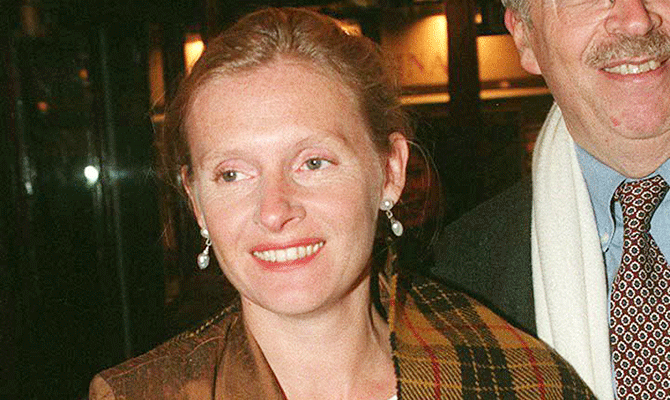
Sophie Toscan du Plantier-rollingnews
PRESSURISED
Significantly, in the context of the DPP document, that Phoenix investigation also said: “Her retraction also states that one officer told her, when insisting she issue statements alleging threats from Bailey, that ‘we have to make Ian Bailey look dangerous and intimidating’.”
Farrell repeated several times in her statement to the McAndrew inquiry that she was pressurised to make false statements to the media alleging threats from Bailey about her evidence in order to construct an image of a threatening character.
The DPP report outlining the Garda’s media strategy was drawn up in 2001 but never made public until 2011. Farrell’s statement – strikingly similar in content – was made in 2005, six years before the DPP report became known outside a close circle of senior gardaí. In short, Farrell could not have known of the DPP’s assertions that mirrored and confirmed her own.
Apart from the symbiotic relationship between gardaí and news reporters, there are various reasons for the fingering of Ian Bailey as chief suspect. One is that he unconsciously presented as a big, brash, British Army officer type with a loud, overbearing personality – an unattractive character to many in rural Ireland. Another is that many women in particular were understandably appalled at Bailey’s physical assaults of his then partner, Jules Thomas. This was enough to persuade many that he was likely the murderer but, as the DPP document argues: “Unfortunately, such violence is not uncommon. What is uncommon is the brutal form of murder of Sophie Toscan du Plantier whereby she suffered the infliction of approximately 50 wounds. The killing of Sophie Toscan du Plantier is not similar to the domestic violence in relation to Jules Thomas.”
The coercion of prosecution witness Marie Farrell by gardaí – they made her life miserable for several years – does not appear to have provoked any sympathy from men or women interested in the case. Farrell said that her sighting of a suspicious gent near the crime scene on the night of the murder was of Bailey. She claims that she initially told gardaí the man was 5 ft 8 in, whereas Bailey was well over 6 ft. Several statements later and the mysterious gent had become much taller and she identified him as Ian Bailey.
Meanwhile, Marie’s husband was in the course of appealing against a summons of no insurance on his vehicle but Ms Farrell said that sympathetic gardaí told him to proceed with his planned appeal and no garda would show for the hearing. This is exactly what happened and the appeal was allowed.
Other inducements – and threats – followed (see The Phoenix 4/5/12) but eventually Farrell and her husband decided they would not let the gardaí “control our lives” any longer and Marie retracted her statement.
Farrell was described in Irish Times reports on the 2004 libel action Ian Bailey took against various newspapers as the Garda’s “crucial witness” and she was regarded similarly by the media’s lawyers and presiding judge Patrick Moran. However, following her retraction, Farrell received the full treatment from many in the media clearly disappointed by this action. Suddenly she was not a reliable witness.
Ironically, the DPP had already dismissed the sighting near the crime scene as irrelevant as it was not directly or indirectly en route between the Thomas household and Sophie’s house. How many journalists reported this salient fact before or after Farrell withdrew her “crucial” evidence?
Much was made then and more recently of the scratches seen on Bailey’s arms in the days surrounding the murder. Senan Moloney’s recent special in the Irish Independent said Bailey’s scratches were witnessed after the murder. The DPP document referred to witnesses – some close to and supportive of Bailey, others not so – who saw the scratches before the murder and who said they knew they were incurred by killing turkeys and felling a Christmas tree.
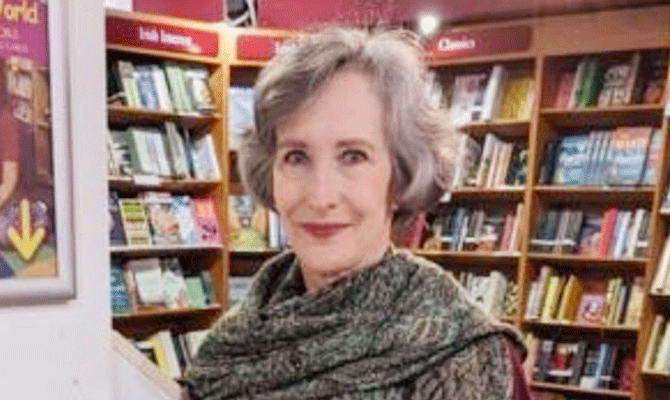
Lara Marlowe
THE EX-WIFE
Moloney also ridiculed Bailey’s statement that he did not leave the Thomas property on the night of the murder as he remained in his studio adjacent to the house to write a story for the Sunday Tribune. Moloney seized on this saying: “It was a Sunday night – there was never any rush on that story.” Again, the DPP document states that the deadline for the story was “imminent”, as evidenced by a Det Sergeant Hogan “who states that the deadline for the story was 2.30 pm on that date” (December 23), although it may have been extended by another 24 hours.
Moloney also refers repeatedly to Bailey’s alleged violence against his ex-wife, Sarah Limbrick – ie “There were detailed incidences of physical abuse suffered at the hands of Bailey”. Given his claims of special knowledge about the case, it is surprising that Moloney appears to be unaware that his own newspaper reported that Bailey won a libel action against the Irish Sun and Irish Mirror in 2004. Judge Moran stated that no evidence had been offered on an allegation published by both papers that the Manchester-born journalist had committed violence against Limbrick. Less than a fortnight ago, Moloney wrote an article about that libel hearing but preferred to focus on Bailey’s sexual fantasies written in a “black diary” he kept and also about his physical assault on Thomas.
Alternatively, and yet again, the DPP report says: “Sarah Limbrick, Bailey’s former wife who has known him since the 1970s has asserted that he never used violence towards her person. When angry he would strike the wall. She appears to loathe him as a person having endured difficult divorce proceedings and a dispute over property with him.”
Moloney admits that efforts to prove Ian Bailey knew Sophie have been difficult but comes up with a trump card, citing the victim’s neighbour, Alfie Lyons, who said he was 90% sure he had introduced her to Bailey. In fact, he told the libel hearing he was 80-90% sure of this. The DPP says that Bailey was adamant he did not know Sophie “on a personal basis” and that “the Garda contention that Bailey is being untruthful and evasive regarding his knowledge of Sophie Toscan du Plantier is not supported by convincing evidence”.
Last week, the Irish Times reported that Garda investigators were still trying to find evidence of Bailey’s knowledge of Sophie and were trawling through 20-odd hours of video footage taken by a photojournalist of cultural events in the mid-1990s. Clearly, they do not have cast-iron knowledge of the two being friends or even acquaintances “on a personal basis”.
The IT, which has always been to the fore in reporting Garda evidence against Bailey, also presented what it regarded as a serious breakthrough in the case, citing similar evidence about Bailey’s alleged knowledge of Sophie.
As The Phoenix put it then: “The IT gave front-page coverage and four stories spread over two days to the apparent breakthrough provided by witnesses who contradicted Bailey’s claim not to have known du Plantier. One was a French filmmaker who stated that the French woman had told him she knew Bailey; this is hearsay evidence offered over 13 years after the event. Another was a man the newspaper could not name or quote as he refused to confirm that he had told the gardaí of this new evidence. But a third man gave direct evidence to the IT that he had seen Bailey being introduced to du Plantier in a neighbour’s house.
“This new witness was Leo Bolger, the former owner of an equestrian business in Dunmanus Bay, West Cork. Bolger described in minute detail his encounter with Bailey and the French woman in a house in the area 13 years after the murder and 17 years after the encounter. It was not explained why Bolger had not come forward to offer this evidence when it became an issue in Bailey’s libel action against the media in 2003.
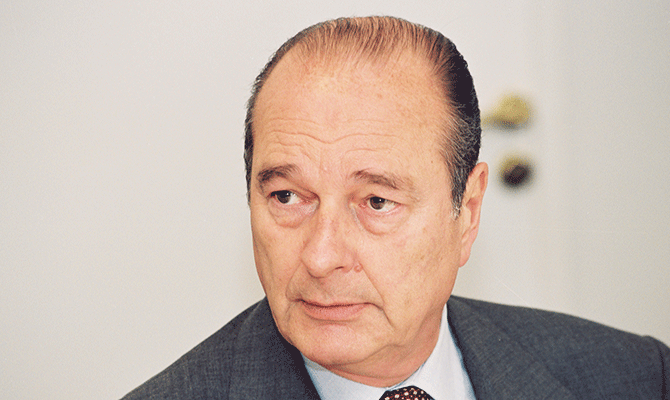
Jacques Chirac
INDUCEMENTS
“Bolger offered this evidence to the IT – and the gardaí – in early 2010; the newspaper published it in February 2010. But Bolger was in the news again just four months later when he appeared in the Cork Circuit Court on serious charges of ‘growing cannabis on a massive scale’, as the Irish Examiner put it on June 17, 2010.
“According to the prosecuting drugs squad gardaí, the operation was the most sophisticated seen in West Cork; Bolger had erected a two-room bunker with differing stages of cannabis cultivation involving ‘advanced hydroponics, heat regulation, watering and a lighting system revolving around the plants to give an even quality of light’.
“The value of the drugs discovered was put at €50,000 minimum and was well above the €13,000 threshold for a mandatory minimum sentence of 10 years jail and up to life. Mercifully, Judge Moran, citing a precedent called the McGinty case which allowed him to exercise discretion, delivered a suspended sentence, referring to the extenuating circumstances that Bolger found himself in.”
Before this clemency was delivered to Bolger, a down-and-out English man, Martin Graham, was offered drugs, cash and clothes by Garda officers as inducements for Graham to obtain incriminating evidence against Ian Bailey.
As the DPP points out: “Martin Graham was destitute, had previous criminal convictions and was a drug abuser… The gardaí must have been aware that such a person might fabricate evidence in order to secure rewards.”
The IT has been as anxious as the Indo to pursue Bailey beyond the grave and columnist Justine McCarthy argued last month that “he had a history of violence against women” (plural), without saying which woman or women other than Jules Thomas he had assaulted.
She also dismissed the contention in various non-mainstream media that there was no evidence against Bailey.
In fact, the DPP document is the source of this contention and none of the journalists hunting Ian Bailey over 27 years and now posthumously have addressed the detailed points contained in the DPP’s analysis. Despite the 44-page document being packed with such detail, these journalists deal with such damning evidence by the simple expedient of ignoring it and repeating the Garda evidence as if it has not incurred the slightest opprobrium from the DPP.
The IT, like others, has also blamed Bailey repeatedly for courting media publicity. Has it really not occurred to such journalists that a man accused over decades by the media of being a murderer might be anxious to persuade as many media as possible that this is untrue?
Apart from the actual murder, the number of scandals and acts of illegality that have occurred in this investigation would occupy any half-serious, medium-sized media outlet for a considerable time. It has involved the attempt to bribe a local vagrant (Graham) with cash, drugs and clothes. It included the smoothing over of a most serious drug conviction of a man (Bolger) who had offered ‘evidence’ the gardaí were most anxious to secure – namely, that he, Bolger, had witnessed Bailey being introduced to Sophie. Bolger offered this evidence 13 years after the murder, 17 years after the ‘introduction’ and just a few months before his very serious drugs trial that saw him walk free. Are journalists not interested in this kind of stuff anymore?
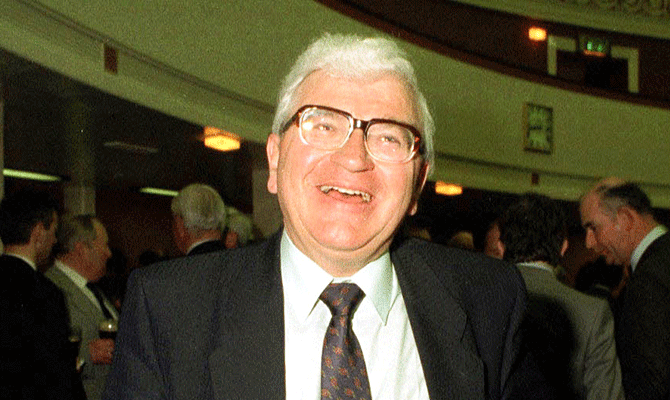
Eamonn Barnes
FALSE EVIDENCE
Then there is the appalling and improper pressure placed on Marie Farrell to give evidence against Bailey (she perjured herself and the gardaí knew it), even as she repeatedly told officers this was false evidence. There were also inducements made to Farrell’s family, including among many other things the deliberate failure to turn up to give evidence of no insurance on her husband’s vehicle. There was also the pressure put on Farrell to make false statements to the media about Bailey’s threats to her (later retracted). This was part of the demonisation of Bailey by An Garda Síochána and the calculated dissemination, via pressure on Farrell, of false lurid reports about him in the community in order to make witnesses “suggestible”.
Are female journalists not interested in this type of bullying of women when it contradicts a prejudice and a story line about a criminal suspect?
That a number of gardaí behaved in this manner is not unique but the willingness of the fourth estate to swallow these stories and enthusiastically purvey them with much indignation about the bestial Bailey and sympathy for Sophie’s family is most disappointing. Bereaved parents of a murdered child are to be pitied but not, surely, to the extent of uncritical support for the Garda’s most inadequate case in an investigation bungled from the start and could have led to a miscarriage of justice.
Another abandonment of the critical scrutiny that one might expect from more serious Irish journalists came with the Paris trial and conviction of Bailey in absentia. Just one example of this French farce was that Marie Farrell’s original, false evidence of having seen Ian Bailey relatively near the crime scene on the night of the murder was presented to the French court but not her recantation of the same evidence.
That this did not provoke outrage, or at least serious interrogation, by the media is fathomless, especially after the government, then attorney general Paul Gallagher’s office, justice minister Dermot Ahern and Garda commissioner Fachtna Murphy had debased the Irish state by handing over the entire case file on the murder to the French authorities on demand.
Of course, it is not inexplicable if the media accepts that the responsible thing to do is to blindly get on board with the above organs of state, and even the French government, to deliver Bailey up to the tender mercies of the French judicial system, regardless of the (non) evidence. As everyone knows, that French ‘court’ convicted Bailey in absentia and sentenced him to 25 years in prison.
The moving French hand in the decades-long effort to convict Bailey for murder is harder to nail down but certain aspects of that process are clear enough. For a start, the murder of French citizen Sophie has been raised at the highest level, as Moloney reported in the Indo last month, saying: “Mr Baudey-Vignaud [Sophie’s son] last month wrote to French president Emmanuel Macron to ask for follow-up from a meeting in 2021 with then Taoiseach Micheál Martin at which the Sophie murder was discussed. Mr Martin has said in the Dáil that the failure to bring a prosecution is ‘a stain’ on Irish society.”
As The Phoenix reported (see edition 31/5/19) when Bailey’s French trial proceeded, the blood lust against him had been whipped up by the French media for more than two decades with several outlets (Paris Match, national radio station RTL and others) using the same headline – “L’Affaire Sophie Toscan du Plantier: L’heure de verité” (the hour of truth) – as the trial began. The millions of words in the French media had the English beast, Ian Bailey, convicted years previously and the unvarnished reality is that the rarefied background of Sophie’s family had much to do with this phenomenon.
FRENCH POLITICS
Paris correspondent Lara Marlowe gave IT readers the Garda case that the DPP had so comprehensively rebutted without stating why the DPP had done so – like every other Ian Bailey media hunter before and since. She also wrote how Sophie’s family were hardly into “power politics”, adding casually that Sophie’s mother, Marguerite Bouniol, had been the deputy mayor in the capital’s second district and that both parents were “honest, hard working, middle class people”. However, in a most respectful article some years earlier, Marlowe had noted how the Bouniol family lived in a “graceful, comfortable apartment… in Paris’s second arrondissement”. The former historic French stock exchange is situated in this desirable neighbourhood and, by all accounts, the Bouniols are more classic French bourgeois than mere petite bourgeois.
Other family links to the French establishment include Mrs Bouniol’s membership of Jacques Chirac’s neo-Gaullist, Rally for the Republic, in which she was a well-known personality; and Sophie’s husband, Daniel, was a personal friend of Chirac. Daniel was also very well connected in the French film industry and media, which has campaigned relentlessly for Bailey’s extradition and trial.
INFLUENCE
As Goldhawk has noted, the campaigners have serious influence in the French entertainment and political milieu and the committee set up to demand justice for Sophie had the support of a former justice minister, former president Jacques Chirac and the president of the Cannes Film Festival.
Aware of their clout at a high level, the family’s lawyer, Alan Spilliaert told the Sunday Times Irish edition in 2013 that Ireland had been a beneficiary of EU financial largesse and that if we wanted a better bail-out deal then Ireland should extradite Bailey.
It is hard to understand the subservient complicity of the Irish government with the French when two DPP office holders – Eamonn Barnes and James Hamilton – have rejected the Garda’s case for a prosecution and former chief justice and Supreme Court judge John Murray has referred to the DPP report’s “dramatic and shocking content”.
Perhaps Monsieur Spilliaert knows the score when it comes to EU finances and the Irish economy and also that Irish ministers hold their French counterparts in awe, as evidenced by then taoiseach Micheál Martin’s abject remarks about the “stain” on Ireland.
Equally, the attitude of Irish media goes beyond appropriate sympathy for Sophie’s family and towards willingness to countenance the very real risk of an unsafe conviction.
The catalogue of improper behaviour at many levels of the Irish judicial and political system has been restrained, it must be said, firstly by the DPP and also by the judiciary, which has refused three times to extradite Ian Bailey. Now, the demands of the gardaí and their chorus line in the media is for the DPP to declare that it has enough evidence to prosecute Bailey if he was still alive.
The unity of An Garda Síochána and the media in this instance is down to the bonding of 27 years of mutual interest, during which time the latter not only discarded basic principles of inquiry and scepticism of authority but cheered on the gardaí as they broke the law with abandon. It is in their interest to now provoke such a declaration as it would exonerate them from the charge of assisting a potential miscarriage of justice.
Will the DPP capitulate to the shrieks of the fourth estate and incur a real stain on Irish society?















